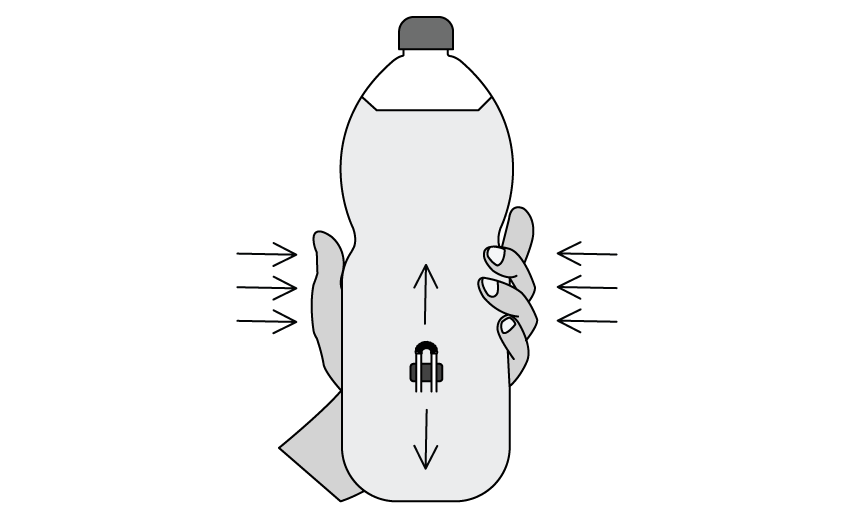The Cartesian Diver is a popular science project which can be used to demonstrate physical concepts.
A 'diver' is made by bending a loop of drinking straw into a U-shape and then weighting it with modelling clay.
A large plastic bottle is filled with water, leaving a small volume of air at the top.
The diver is carefully added, so that some water enters it but the straw remains floating upright due to trapped air.
Finally the lid is tightly screwed back onto the bottle, making a sealed container.
The completed Cartesian Diver and the construction of the diver are shown in Fig. 1.1.

Fig. 1.1.
When the sides of the bottle are squeezed and released in response the 'diver' moves up and down rapidly as illustrated by Fig. 1.2.

Fig. 1.2.
Discuss the physics of the Cartesian Diver when the sides of the bottle are squeezed.
(i)
Explain the observed motion of the 'diver'.
(ii)
Predict which direction the diver moves in when the sides of the bottle are squeezed.














